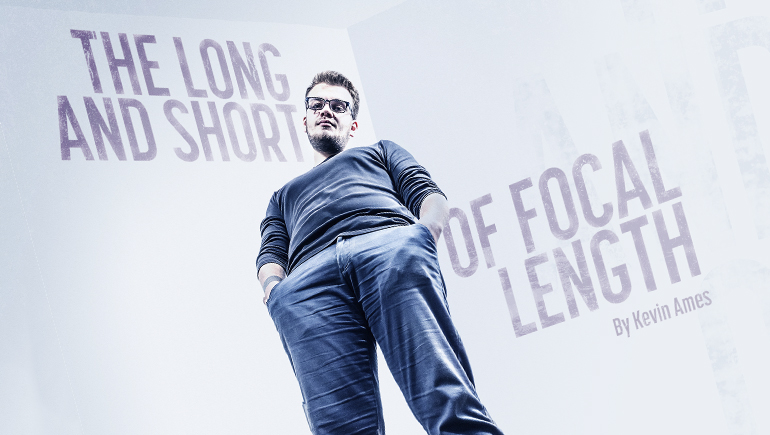Photographers talk about The focal length of their lenses, but what is focal length and why is it important? This column answers these two questions and examines their ramifications. However, before jumping into those answers, let’s begin by defining the term Focal length.
Focal Length Defined
Focal length is the distance measured in millimeters from the optical center (also known as the center nodal point) of the lens to the sensor when the lens is focused at infinity. Let’s break this definition down:
- Optical center or center nodal point is the place in a lens where the light inverts the image.
- Infinity is the point where the optical center is closest to the sensor while producing a sharp image of a distant subject.
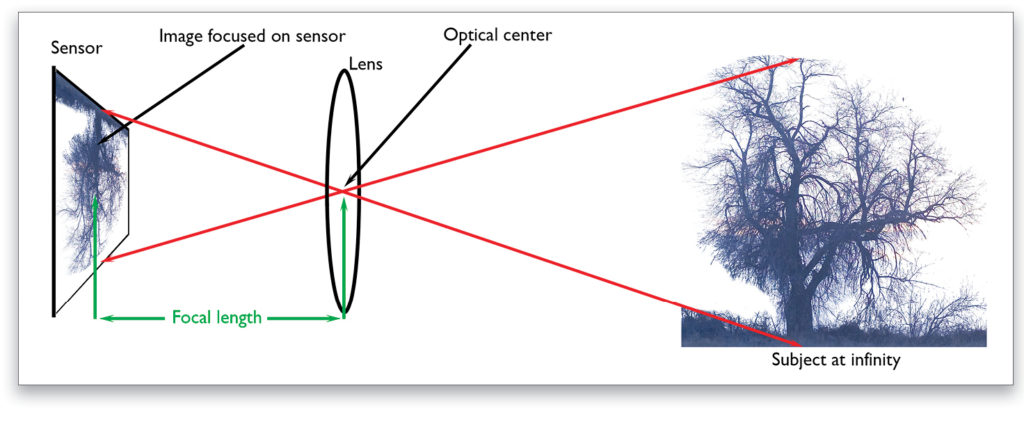
Normal Focal Length & the Camera’s Format
The Normal focal length is specific to the camera’s sensor or film size. It’s the measurement in millimeters of the diagonal of the camera’s sensor or film.
Normal lens focal lengths rarely exactly match the diagonal measurement of the sensor. This is one place where “closies” do count. The chart below shows format sizes, diagonals, and the nearest normal lens for common digital and film formats.
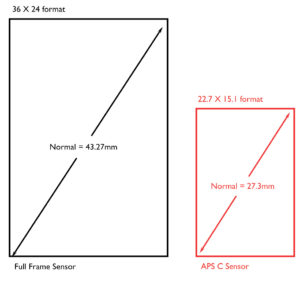
The Normal Lens Dividing Line
Knowing the normal lens for a camera is important. The normal focal length is the one between wide-angle and telephoto lenses. Any focal length shorter than the normal focal length is considered a wide–angle. Focal lengths longer than normal are telephoto.
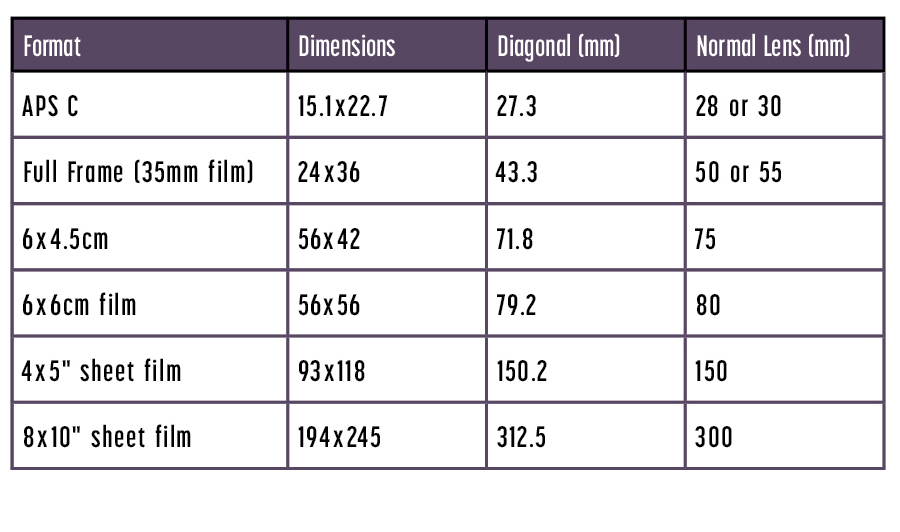
Format Matters
The normal lens for an APS C sensor camera is 28mm. Normal on a full-frame is 50mm. The 50mm on an APS C camera is a telephoto while the APS C normal (28mm) on a full frame is a wide-angle. Normal on an 8×10 view camera is 300mm. On a full-frame DSLR, that lens is a telephoto with a 6x magnification.
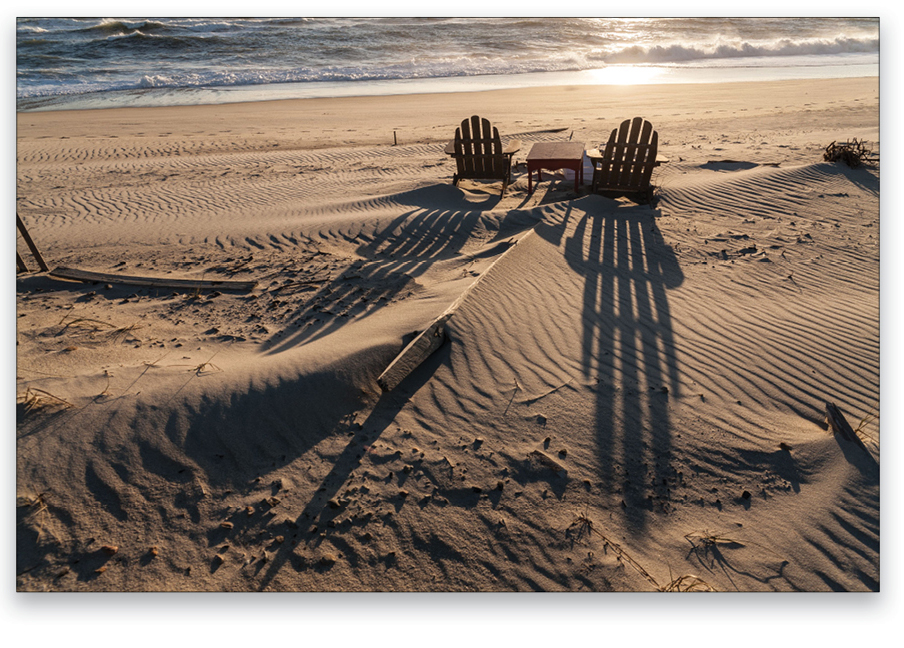
Focal Length & Depth of Field
As focal length shortens, the apparent depth of field increases. The APS C sports a shorter focal length normal lens. These cameras have inherently more depth of field than the full frames because shorter focal lengths do equivalent work of larger formats. This makes them great for weddings and photojournalistic work. More of a scene is in focus at larger apertures. The downside is difficulty in throwing backgrounds out of focus.
A 24mm lens at f/22 will give acceptable sharpness from about 2’ to infinity. A 28mm normal lens on an APS C camera has almost that much depth of field too.
The opposite is also true: The longer the focal length, the less the apparent depth of field. Notice that I use the word “apparent.” Depth of field is a function of the circle of confusion created by the size of the aperture in a lens. The smaller the apertures the more depth of field is created. Wide-angle lenses are physically much smaller than telephoto lenses. It goes to reason that their apertures are physically smaller as well. Since depth of field is a function of the actual diameter of the aperture of a lens, a deeper discussion of it is not appropriate here.
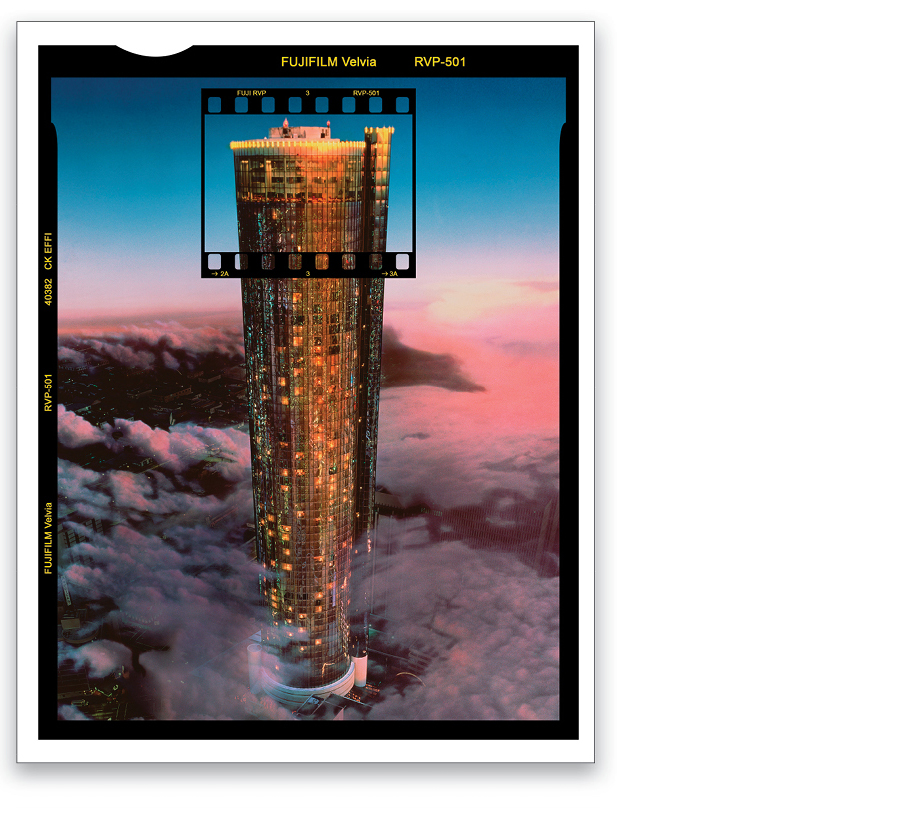
Format & Focal Length
Let’s look at a photograph made on a 4×5” large-format on film compared to a full-frame sensor on 35mm film. A 90mm lens on the 4×5 is a wide-angle. On the full frame, it’s a telephoto. This photograph I made of Atlanta’s Westin Peachtree Plaza with a Sinar 4×5 camera with a 90mm lens shows the entire building, the sky, and the horizon. A 90mm lens on a 35mm camera delivers exactly the same subject size for the area it covers as shown by the 35mm frame overlay.
That shot on a frame of 35mm film or a full-frame DSLR shows only a small section of the entire image that the large-format 4×5 camera recorded. The bottom line is that a 90mm lens is a 90mm lens no matter what format it covers.
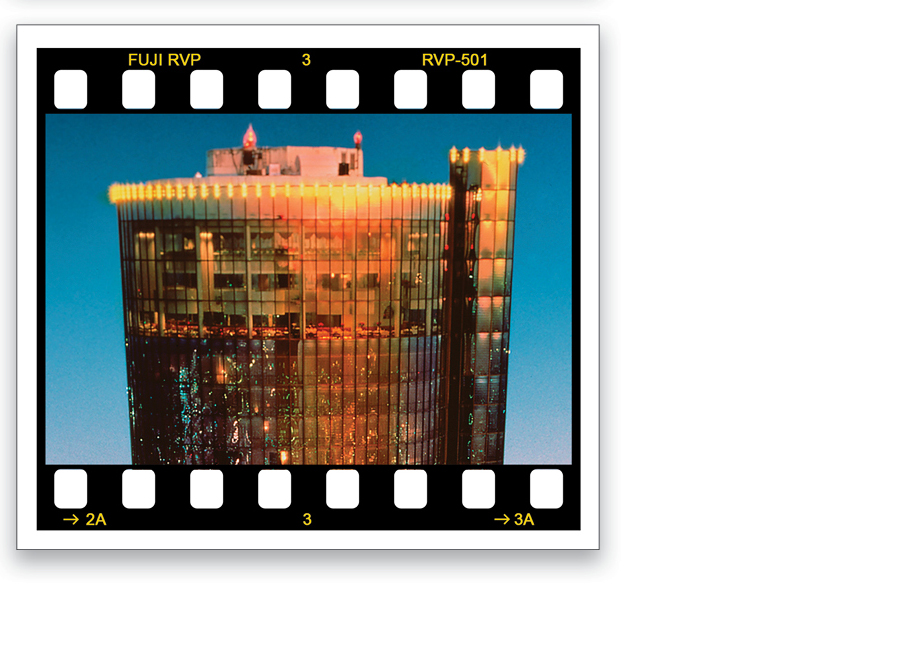
Crop Factor:Busting the Magnification Myth
At the dawn of the DSLR, the only sensors that could be economically manufactured were the APS C size. They were smaller than the standard 35mm (24x36mm) format. The camera manufacturers marketed these cameras by telling the world the focal length was “magnified.” For APS C sensors, the “magnification” factor was 1.5. That means that a 100mm lens would have the effect of a 150mm lens. The truth was (and still is) that the APS C sensor produced a cropped version of the image that could be realized with a full-frame camera. Remember, the focal length of a given lens and therefore its magnification is the same no matter what format camera it’s on.
This photograph of a cross-country skier in Alaska was made with a Canon EOS 5D Mark II and a Canon 17–40mm f/4 lens at ISO 100, 1/200, and f/13. The full frame reveals the curve of ledge and the triangle of blue sky that the APS C sensor crops out.
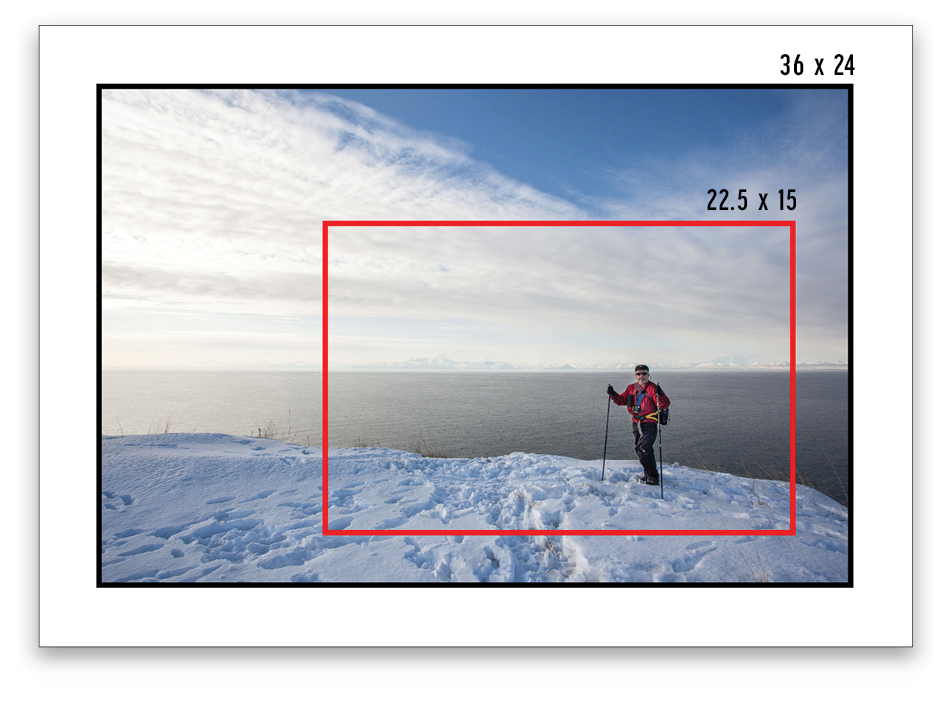
Perspective & Focal Length
There are two types of perspective distortion: extension and compression. Extension distortion is also called wide-angle distortion; compression distortion is known as tele-photo distortion.

- Wide-angle distortion: Every photographer who has moved in close on a person with a wide-angle lens has experienced extension distortion. The face becomes super big while the body shrinks the farther away it is from the lens. Extreme wide-angle lenses (top-right) push scenes away from the camera.
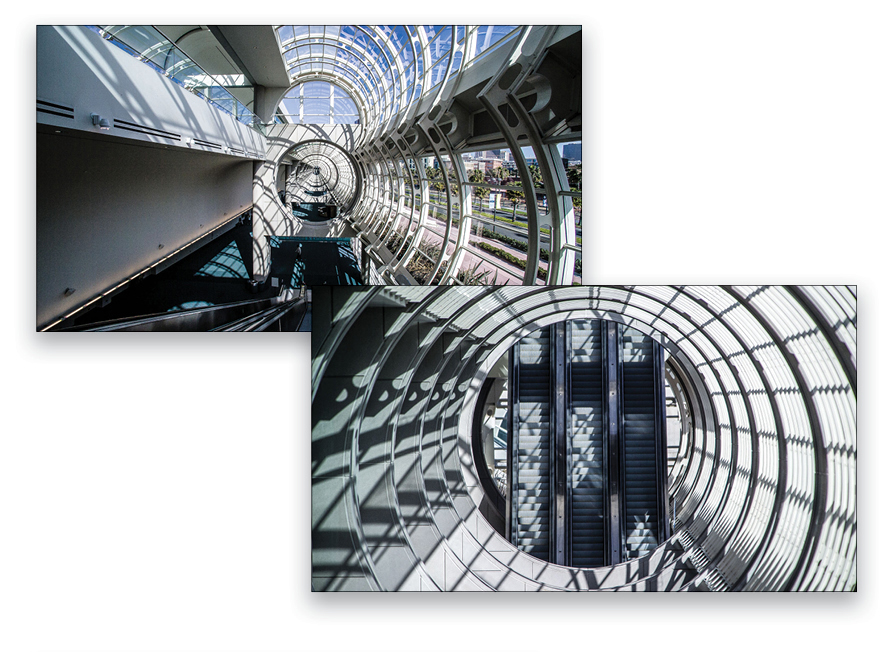
- Telephoto distortion: Long lenses compress subjects. The result looks like someone has smashed everything onto the background. Compare this photograph of the escalators made with a 400mm telephoto to the previous wide-angle version made with a 14mm. A receding line of objects appears to stack on top of each other. A row of tombstones photographed at a small aperture on a Canon EOS 5D Mark II and Sigma 120–300mm f/2.8 lens with a Sigma 2x teleconverter at ISO 100, 1/20, f/18, and a 600mm focal length demonstrate compression distortion.
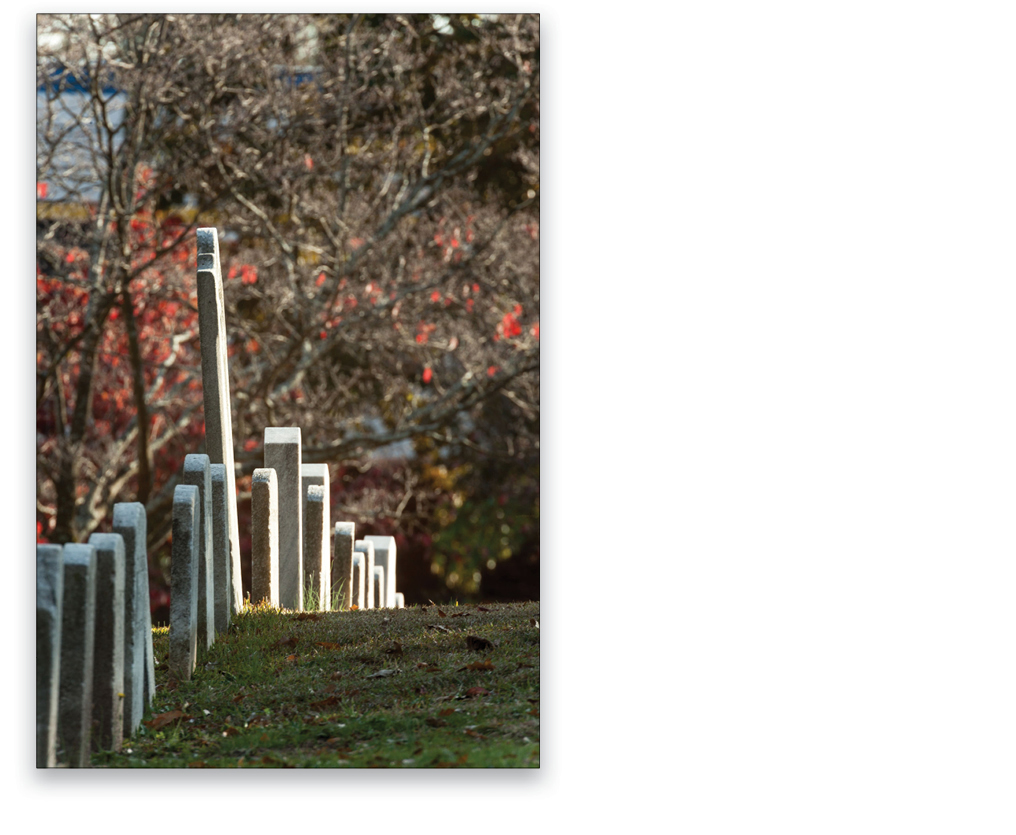
One Last Secret
The focal length of the human eye is about 22mm-ish. The “ish” is because the retina that forms the image from light coming through the eye is curved. Its angle of view is about 53°. Normal lenses, interestingly, mimic the angle of view of human vision.
The photograph of the escalators in the San Diego Convention Center (bottom-right) shows how it looks to our eyes. Consider what the extreme focal lengths did to the same scene photographed from exactly the same place.
Lenses today are better than anytime in the history of photography. Lenses with the shortest and longest focal lengths, unfortunately, are quite costly. There’s a solution to being able to use these lenses: rent them for a project. Owning a 600mm lens or a fish-eye makes little sense of the cents they cost compared to the price of renting them. Imagine a project, then Google “lens rentals.” Any focal length you can imagine for the major DSLR brands—Canon, Nikon, or Sony—is available to satisfy your creative explorations.
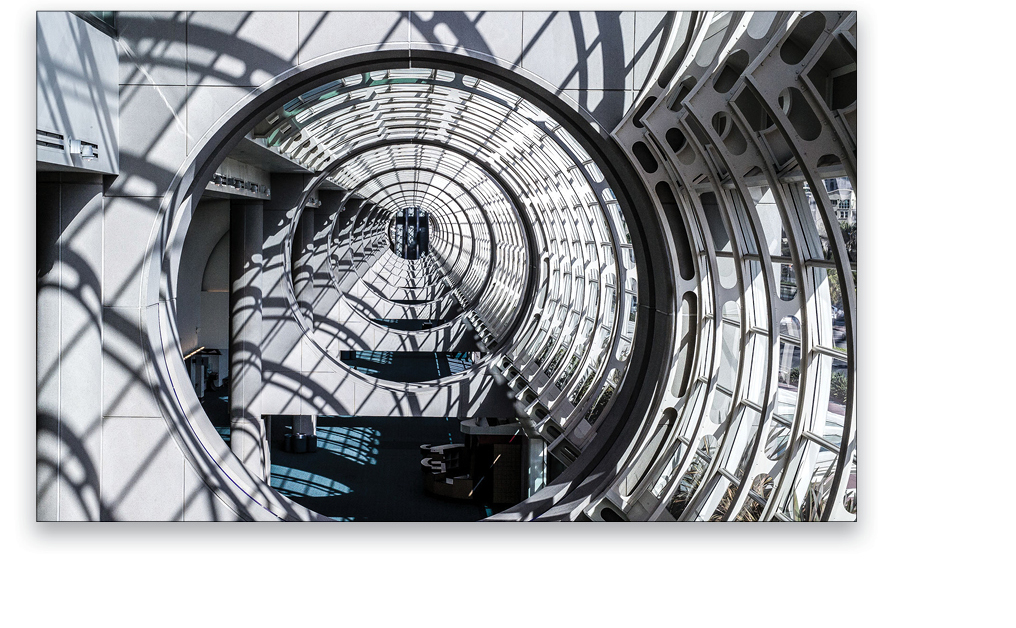
This article previously appeared in the July/August issue of Photoshop User magazine.

